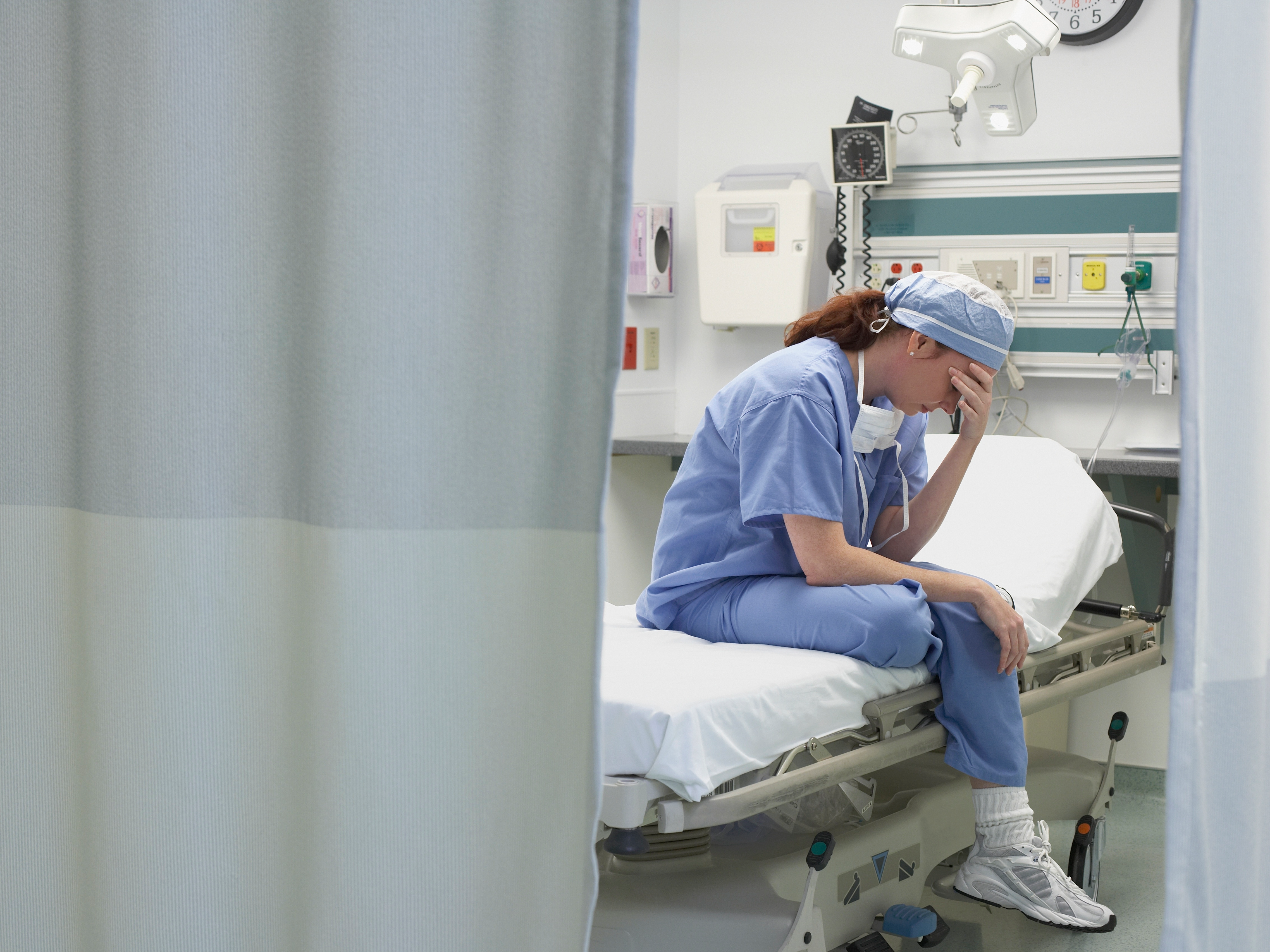- Between one-third to one-half of nurses and doctors in the US suffer from burnout, according to a new report from the National Academy of Medicine.
- The causes of burnout include unmanageable work loads, inadequate technology, and a lack of support.
- Clinician burnout is reaching a breaking point this year. Doctor burnout reached an all-time high in 2019, and nurses went on strike in four states this summer.
- Visit Business Insider’s homepage for more stories.
Your doctor is more likely to be suffering from burnout than ever before.
A new report from the National Academy of Medicine found that between 35% and 54% of nurses and doctors have symptoms of burnout.
The causes of this widespread clinician burnout include unmanageable work loads, inadequate technology, and a lack of social support, the study found. The 321-page report included a review of available scientific research on clinician burnout.
The report’s authors said clinician burnout is a systematic, not individual, issue. Systematic issues include outdated technology, overworking medical students, expensive schools forcing students to take out high student loans, and a lack of peer support groups in hospitals.
The issue of clinician burnout has reached a breaking point this year. Physician burnout reached an all-time high in 2019, after 79% of primary care doctors reported suffering from workplace-related stress. Nurses, meanwhile, went on strike in four states this summer, in part demanding better nurse-to-patient ratios.
Nurses say they are burned out due to having to care for too many patients at once. Research from Australia suggests that when nurses don't have more than four patients at a time, it can save lives and lead to less readmission. Right now, just one state - California - has a cap on how many patients nurses can care for.
"There is a strong economic case for the health system to continue a comprehensive strategy to reduce the work-induced syndrome of burnout and caregiver fatigue among physicians," Barbara McAneny, a former president of the American Medical Association, said in a statement to Business Insider. "An energized, engaged, and resilient physician workforce is essential to achieving national health goals."
Workplace burnout is becoming a nationwide crisis for US employees
Work-related burnout is on the rise across all American industries. Over half of workers say their job is negatively impacting their mental health, according to a recent survey. The World Health Organization deemed burnout such an issue it recently classified it as a "syndrome," medically legitimizing the condition for the first time.
The risk for getting depression from your job is especially high for people who work outside the typical 9-to-5, as many clinicians do. In fact, one recent University of Exeter study found people who work irregular hours or the night shift are 33% more likely to have depression.
Suffering from depression and work-related burnout can have dire consequences. A study out of the University of California at San Diego found nurses are more at risk for suicide than the general population.
Gerard Brogan, a registered nurse and the director of nursing practice National Nurses United and their California branch, said many issues stem from decisions made by hospital or healthcare administrators that don't help medical workers. Algorithmic patient treatment, for instance, takes autonomy away from doctors and nurses who might know what's best for an individual patient.
"Doctors, nurses, and everybody else who becomes a healthcare professional don't do it for the glamour," Brogan told Business Insider. "You've got a cadre of community-minded people who entered the medical nursing profession to be an asset to their community, and their ethos is not the same as a for-profit healthcare system. It's just not."
- Read more:
- Suicides among nurses are on the rise. Here's why one of America's fastest-growing jobs is facing a major crisis.
- American workers say jobs should do more to help them cope with mental health issues like depression and stress
- Lonely, burned out, and depressed: The state of millennials' mental health in 2019

